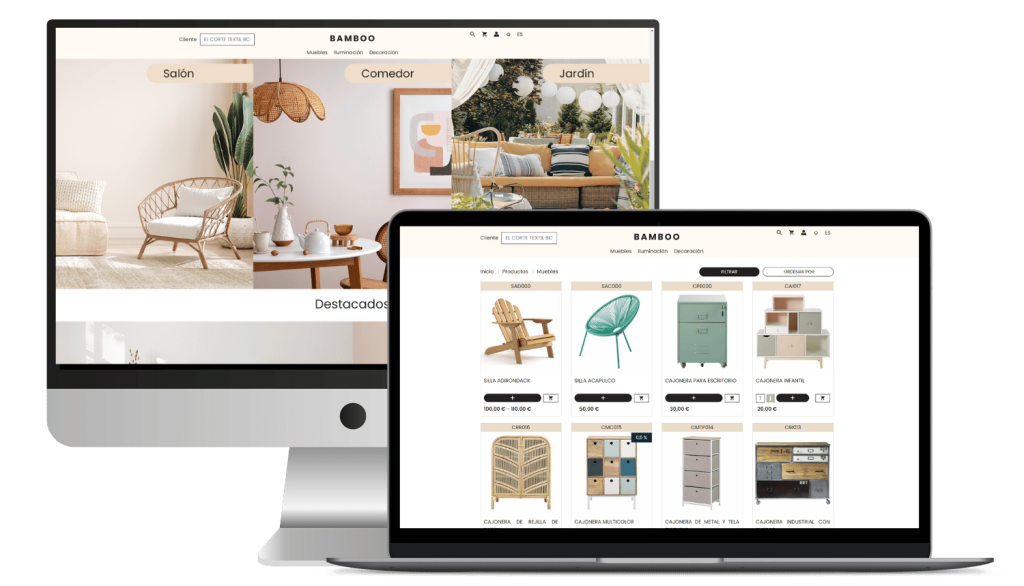
What is a marketplace? Find out how to get the most out of it
What is a marketplace? Find out how to get the most out of it In today’s digital world, marketplaces have

Omni-channel and multi-channel are key strategies for B2B companies looking to improve communication with their customers. Therefore, it is essential to know the specific characteristics of each one, as well as their advantages, in order to understand the value they can bring to our company and thus make the right decision.
Omni-channel and multi-channel are two fundamental strategies for B2B companies seeking to improve communication with their customers. Although both are based on the use of different communication channels, they present significant differences in their approach and objective.
Omni-channel in B2B companies focuses on the integration of brand, messaging and online and offline touch points throughout the customer journey.
This strategy seeks to provide a consistent and positive experience across every channel, allowing customers to move frictionlessly between devices and platforms. Its main objective is to improve the B2B customer experience by offering personalized and efficient communication.
On the other hand, multichannel in B2B companies consists of distributing content and ads through various channels without necessarily integrating them with each other.
This strategy allows companies to be present in different channels so that customers can choose how they want to interact. Although channels are often isolated, the multichannel approach focuses on maximizing presence in as many channels as necessary.
Integrate your ERP with B2B ecommerce with Stoam SaaS

Omni-channel in the B2B environment has a number of distinctive characteristics that make it an effective strategy for improving communication with customers and optimizing the buying experience.
One of the pillars of omnichannel in companies is the integration of the brand and messages at all points of contact with customers. This implies maintaining consistency in communication and brand image, regardless of the channel used. Consistent brand presence across all channels helps to strengthen brand identity and build customer trust.
It is characterized by offering a personalized experience to each customer, adapting messages and communication to the needs and preferences of each one. Through data collection and audience segmentation, it is possible to customize communication according to the characteristics of each customer.
Another important feature is the ability to provide a seamless transition between different communication channels. This means that customers can move from one channel to another easily, without losing continuity in communication and without experiencing friction in their shopping experience.
Omni-channel in B2B companies offers a number of significant advantages that contribute to improved communication, customer satisfaction and loyalty.

Multichannel in B2B companies offers key characteristics that differentiate it from omnichannel and make it an attractive strategy for achieving certain specific business objectives.
Through multichannel, companies can diversify their sales strategies by using different channels to promote their products or services.
This diversification allows for greater market exploration and the identification of new business opportunities through experimentation with different sales approaches.
The multichannel approach in B2B companies offers a series of advantages that can enhance the presence and communication of companies in the market, allowing them to reach a wider and more diversified audience:
By distributing content through various channels, companies can increase their visibility and market reach, reaching more potential customers.
Multichannel provides the opportunity to adapt communication to different platforms and formats, allowing companies to adapt to their customers’ preferences in terms of the way they interact.
By being present in several channels, they can diversify their sales strategies and target different market segments more effectively, thus increasing the chances of closing deals.
Transform your ERP into a powerful B2B ecommerce system

In the B2B business environment, choosing the right strategy between omnichannel and multichannel is crucial to achieve communication and customer satisfaction objectives. Here are the factors to consider in this decision.
While the choice between omnichannel and multichannel is important, there is another alternative. It is also valid to consider the possibility of combining both strategies synergistically.
Integrating elements of both can offer greater market coverage and a richer customer experience that better suits your needs.
Stoam ‘s long experience working with B2B companies allows us to offer solutions for all types of projects. We are ready to develop a standardized solution tailored to your needs,contact us today and together we will lead your company to success!
Share:

What is a marketplace? Find out how to get the most out of it In today’s digital world, marketplaces have

Business to consumer (B2C): how it works and how it differs from B2B In today’s world, e-commerce and direct business-to-consumer

Alibaba revolutionises B2B commerce with ‘Accio’ – the AI-powered search engine for SMEs Share: Tabla de contenidos What is Accio

Examples of market segmentation: How to apply it in different sectors? In today’s competitive business landscape, market segmentation is more

Omni-channel strategy: How to integrate all channels to improve customer experience In a world where consumers use multiple channels to

What are open APIs and their role in SaaS solutions? Open APIs have transformed the way businesses use software, especially

Analysis of B2B marketplaces: Are they an opportunity or a threat? B2B marketplaces are transforming the way companies buy and

How to use chatbots in B2B ecommerce to improve conversions In the world of ecommerce B2B (Business to Business)shopper expectations

ERP and sustainability: How a system can reduce environmental impact Sustainability has become a crucial priority in today’s business landscape.
Automate orders with Stoam SaaS b2b ecommerce
